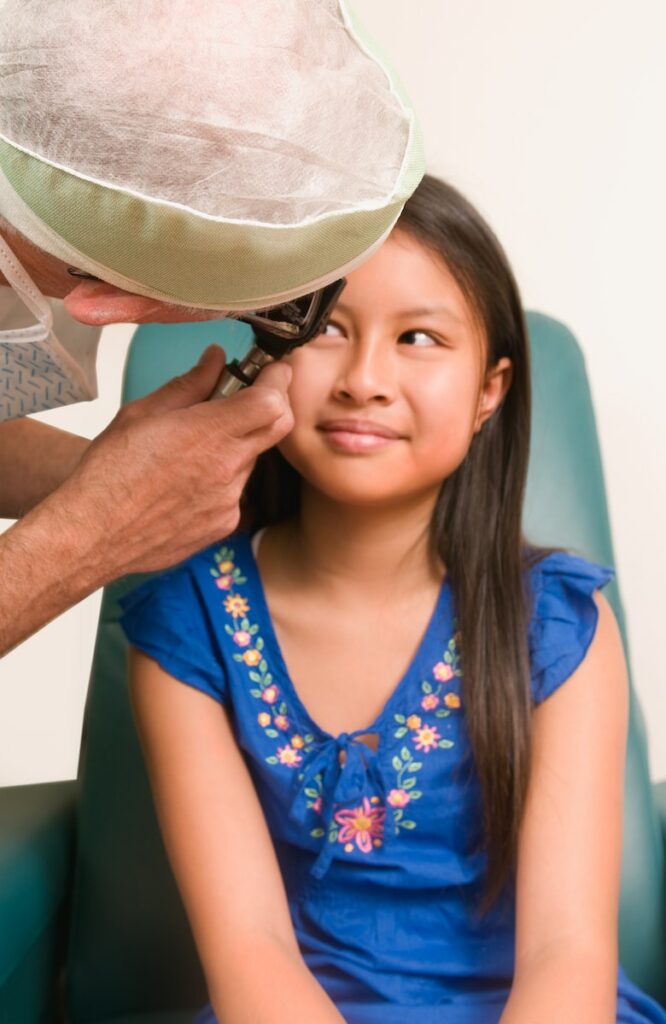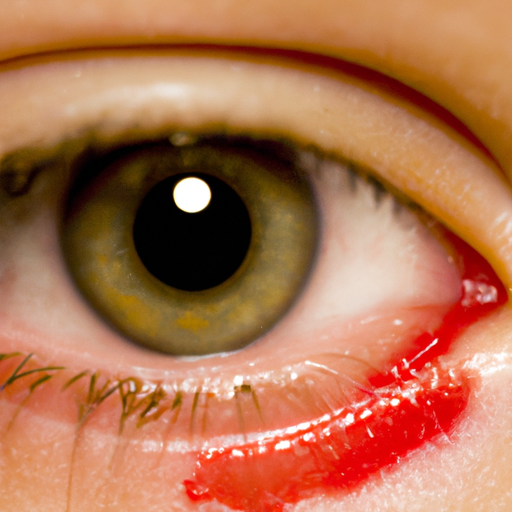This article titled “How to Treat Conjunctivitis in Children” encompasses a wide range of topics focused on kids’ health. Offering valuable information on various health issues related to children, this content covers an array of subjects such as anxiety, exercise for children with asthma, bedwetting, chickenpox, constipation, coughs and colds, as well as conjunctivitis. Additionally, it addresses topics like dental care, vomiting, fever, food allergies, foot care, and hand, foot and mouth disease, among many others. Moreover, this comprehensive content provides a symptom checker and a health service finder tool, offering a holistic approach to addressing children’s health concerns.
Overview of Conjunctivitis
Conjunctivitis, also known as pink eye, is an inflammation of the conjunctiva, which is the thin and transparent tissue that covers the white part of the eye. It can be caused by viral, bacterial, or allergic reactions, and it is important to identify the cause in order to determine the appropriate treatment. Conjunctivitis is a common condition, especially among children, and it can cause discomfort and redness of the eye. This article will provide an overview of conjunctivitis, including its causes, symptoms, diagnosis, and treatment options.
What is Conjunctivitis?
Conjunctivitis is an infection or inflammation of the conjunctiva, which is a thin membrane that lines the inner surface of the eyelid and covers the white part of the eye. It can be caused by viruses, bacteria, allergens, or irritants. The most common symptoms of conjunctivitis include redness, itchiness, tearing, discharge, and a gritty or burning sensation in the eye. Conjunctivitis can affect one or both eyes and can be highly contagious, spreading easily from person to person through direct or indirect contact.

Causes of Conjunctivitis
Conjunctivitis can have different causes depending on the type of infection or irritation involved. Viral conjunctivitis is often caused by the same viruses that cause the common cold or flu and can be highly contagious. Bacterial conjunctivitis is usually caused by bacteria such as Staphylococcus or Streptococcus and can result from poor hygiene or contact with contaminated objects. Allergic conjunctivitis is a response to allergens such as pollen, dust mites, or pet dander and tends to occur seasonally or in response to specific triggers. Irritant conjunctivitis can result from exposure to irritants such as smoke, chemicals, or foreign objects in the eye.
Symptoms of Conjunctivitis
The symptoms of conjunctivitis can vary depending on the cause, but common symptoms include redness of the eye, itching or burning sensation, watering or tearing, discharge from the eye, blurred or hazy vision, sensitivity to light, and a feeling of grittiness or foreign body sensation in the eye. In viral conjunctivitis, the discharge is usually watery and clear, while bacterial conjunctivitis may cause a thick, yellow or green discharge. Allergic conjunctivitis often causes itching and watery eyes, along with other allergy symptoms such as sneezing or a runny nose. If you or your child experience any of these symptoms, it is important to consult a healthcare professional for a proper diagnosis and appropriate treatment.

Diagnosing Conjunctivitis
Diagnosing conjunctivitis involves a combination of physical examination, medical history, and sometimes laboratory tests. A healthcare professional will examine the affected eye, looking for signs of redness, swelling, discharge, and other characteristic symptoms. They will also inquire about symptoms, including the duration, severity, and any possible triggers or exposures. The medical history may also include questions about recent illnesses, allergies, or previous episodes of conjunctivitis. In some cases, laboratory tests such as a culture or swab may be performed to identify the specific cause of conjunctivitis, especially if bacterial infection is suspected.
Home Remedies for Conjunctivitis
While medical treatment is often necessary to resolve conjunctivitis, there are some home remedies that can help alleviate symptoms and promote healing. These remedies include cleanliness and hygiene practices, warm compresses, artificial tears, avoiding irritants, and avoiding wearing contact lenses.
Maintaining cleanliness and good hygiene is crucial in preventing the spread of conjunctivitis. It is important to wash hands frequently, especially before and after touching the eyes or applying any eye drops. Avoid rubbing or touching the eyes, as this can further irritate the condition and potentially worsen the infection. Additionally, avoid sharing personal items such as towels, pillows, or cosmetics, as these can harbor germs and contribute to the spread of conjunctivitis.
Applying warm compresses to the affected eye can help soothe irritation and reduce redness. A clean, warm washcloth can be gently placed over the closed eye for a few minutes several times a day. This can help to relieve discomfort and promote faster healing. Artificial tears, which are over-the-counter lubricating eye drops, can also provide relief by moisturizing the eye and reducing dryness and irritation.
It is important to avoid irritants that can worsen conjunctivitis symptoms. These may include smoke, dust, pet dander, or pollen. Stay indoors on days with high pollen counts, keep windows closed, and use air purifiers or filters if necessary. Additionally, avoiding wearing contact lenses during the course of conjunctivitis can help prevent further irritation and potential complications.
Prescription Medications
In some cases, prescription medications may be necessary to treat conjunctivitis. These medications are prescribed by a healthcare professional and may include antibiotic eye drops or ointments, antiviral medications, or antihistamines.
Antibiotic eye drops or ointments are commonly prescribed for bacterial conjunctivitis to help eliminate the bacterial infection. These medications work by killing or inhibiting the growth of the bacteria causing the infection. It is important to follow the prescribed dosage and administration instructions carefully, as inappropriate use of antibiotics can contribute to antibiotic resistance.
Antiviral medications may be prescribed for viral conjunctivitis caused by specific viruses. These medications can help reduce the duration and severity of symptoms, but they may not be effective against all types of viral conjunctivitis. Like antibiotics, antiviral medications should be used as directed by a healthcare professional.
Antihistamines are often prescribed for allergic conjunctivitis to help alleviate symptoms such as itching, redness, and watery eyes. These medications work by blocking histamine, which is responsible for allergic reactions. Antihistamines are available in various forms, including eye drops, oral tablets, or nasal sprays. Consult with a healthcare professional to determine the most appropriate antihistamine for your child’s condition.
Natural Remedies for Conjunctivitis
In addition to medical treatments, there are several natural remedies that can help relieve the symptoms of conjunctivitis. These remedies include using tea bags, honey, aloe vera, and chamomile.
Placing a cooled tea bag, preferably black or green tea, on the affected eye can provide relief from inflammation and redness. Simply soak the tea bag in cold water and place it on the closed eye for a few minutes.
Honey has natural antimicrobial properties and can help fight infection. It can be mixed with warm water and used as an eyewash or applied on the eyelids. However, it is important to ensure that the honey is pure and free from contaminants, as using contaminated honey can worsen the infection.
Aloe vera gel, known for its soothing properties, can be applied topically around the eyes to provide relief from irritation and inflammation. Ensure that the gel is pure and free from any additives or perfumes, as these can further irritate the eye.
Chamomile, known for its calming effects, can be used as a warm compress or as a natural eyewash. Steep chamomile tea bags in warm water, let them cool, and then place them on the closed eyelids or use the cooled tea as an eyewash.
Preventing the Spread of Conjunctivitis
Preventing the spread of conjunctivitis is crucial in reducing its transmission and preventing further infections. This can be achieved through a few simple measures, including frequent hand washing, avoiding touching the eyes, not sharing personal items, and cleaning and disinfecting surfaces.
Frequent hand washing is essential in preventing the spread of conjunctivitis. Encourage children to wash their hands thoroughly with soap and water for at least 20 seconds, especially before and after touching the eyes or applying any eye drops. Hand sanitizers can also be used when soap and water are not available.
It is important to emphasize the importance of not touching the eyes, as this can introduce bacteria or viruses into the eye and contribute to the spread of conjunctivitis. Encourage children to avoid rubbing or scratching their eyes, and teach them proper hygiene practices to minimize the risk of infection.
Sharing personal items such as towels, pillows, or cosmetics should be avoided to prevent the spread of conjunctivitis. These items can harbor germs and contribute to the transmission of the infection. Ensure that each family member has their own personal items and encourage children to not share their belongings with others.
Cleaning and disinfecting surfaces can help eliminate any bacteria or viruses that may be present. Regularly clean commonly-touched surfaces such as doorknobs, light switches, bathroom fixtures, and toys. Use a disinfectant that is safe for use on surfaces and follow the manufacturer’s instructions for proper use.
When to Seek Medical Help
While most cases of conjunctivitis can be managed at home, there are situations where medical help should be sought. It is important to consult a healthcare professional if the symptoms persist or become severe, if conjunctivitis recurs frequently, or if there are any other complications.
Persistent or severe symptoms may indicate an underlying condition or a more serious infection. If the redness, swelling, discharge, or discomfort does not improve within a few days of home treatment, it is advisable to seek medical evaluation. Prompt medical attention is especially important if there is significant pain, vision changes, or if the symptoms are affecting both eyes.
Recurring conjunctivitis, especially if it happens frequently or if it is accompanied by other recurring infections, may warrant further investigation. A healthcare professional can help determine the underlying cause and suggest appropriate treatment or preventive measures.
Other complications of conjunctivitis, although rare, can occur and may require medical intervention. These include inflammation of deeper eye structures, corneal ulceration, or vision-threatening infections. Any concerns about the child’s eye health or complications should be discussed with a healthcare professional.

Tips for Parents
Parents play a crucial role in managing and preventing conjunctivitis in children. Here are a few tips to help parents navigate this common childhood condition:
Teaching good hygiene practices is essential in preventing conjunctivitis. Teach children to wash their hands regularly, especially before and after touching the eyes or applying any eye drops. Emphasize the importance of not touching or rubbing the eyes to minimize the risk of infection.
Keeping the affected eye clean is important for promoting healing and preventing further irritation. Gently clean the eye area with a clean, damp cloth or cotton ball to remove any discharge or crusting. Avoid using harsh or irritating substances on the eye, such as soaps or other cleansers.
Promote rest and healing by ensuring that your child gets enough sleep and avoids activities that may strain or irritate the eyes. Limit screen time, especially in cases of digital eye strain, and encourage activities that do not require intense visual focus or eye strain.
In cases of severe conjunctivitis or if the child is experiencing discomfort, it may be necessary to keep them away from school or daycare until symptoms improve. This can help prevent the spread of conjunctivitis to other children and allow the child to rest and recover at home.
Safety Precautions
When dealing with conjunctivitis, it is important to take safety precautions to ensure the well-being of the child. These precautions include avoiding harmful over-the-counter remedies, following prescribed medications correctly, and monitoring for allergic reactions.
Avoiding harmful over-the-counter remedies is crucial, as some medications may not be suitable for children or may worsen the condition. Consult with a healthcare professional before using any over-the-counter eye drops or ointments, as they can potentially cause adverse effects or delay appropriate medical treatment.
If prescribed medications are necessary, it is important to follow the healthcare professional’s instructions carefully. Use the prescribed dosage and administration instructions as directed. Failure to adhere to the prescribed treatment plan may result in ineffective treatment or worsening of symptoms.
Monitor for allergic reactions when using any medications or natural remedies. Some individuals may be allergic to certain medications or substances, leading to adverse reactions such as swelling, rashes, or difficulty breathing. If any allergic reactions occur, discontinue use immediately and seek medical attention.
Consultation with a Healthcare Professional
In cases of conjunctivitis, it is important to seek a medical evaluation to ensure appropriate diagnosis and treatment. A healthcare professional can perform a thorough examination, identify the underlying cause of conjunctivitis, and recommend the most suitable treatment options.
Importance of a medical evaluation cannot be stressed enough. While home remedies and over-the-counter treatments may provide temporary relief, they may not address the underlying cause and can potentially delay appropriate medical treatment. Seeking timely medical evaluation can help prevent complications and promote faster recovery.
Choosing the right healthcare provider also plays a crucial role in managing conjunctivitis effectively. Optometrists, ophthalmologists, or pediatricians who specialize in eye care are well-equipped to diagnose and treat conjunctivitis. Consulting with a healthcare professional who has experience in treating pediatric eye conditions can ensure the best possible care for your child.
In conclusion, conjunctivitis is a common eye condition that can cause discomfort and redness. It can be caused by various factors, including viruses, bacteria, allergens, or irritants. While home remedies and natural remedies can provide temporary relief, it is important to seek medical evaluation for proper diagnosis and treatment. Prescription medications, such as antibiotic eye drops or ointments, antiviral medications, or antihistamines, may be necessary in some cases. Preventing the spread of conjunctivitis through good hygiene practices and avoiding irritants can help reduce the transmission of the infection. Parents should be aware of the symptoms of conjunctivitis and seek medical help if symptoms persist, recur frequently, or if there are any complications. By following these guidelines and consulting with a healthcare professional, conjunctivitis can be effectively managed and treated in children.
